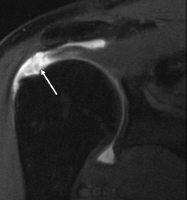Rotator cuff repair surgery and postoperative rehabilitation continue to be some of the most debated topics on the shoulder at orthopedic and physical therapy conferences. Numerous studies have been published showing the failure rate of rotator cuff repair surgery ranges anywhere from 25-90%.

These studies have sparked debate over the role of postoperative physical therapy follow rotator cuff repair surgery, with many physicians becoming more conservative and slowing down their protocols. This obviously implies that some physicians believe that early physical therapy is the reason why failures occur. This thinking may be flawed and factors such as tissue quality, tear severity, patient selection, surgical technique, and others may be more likely related to ultimate failure rates.
Another perspective to consider is that despite having a failed rotator cuff repair, patient satisfactions were good. From experience, I can tell you that patients are satisfied when they:
- Have less pain
- Regain their mobility
- Return to functional activities
So the question really should be asked – if there is up to a 90% surgical failure rate but significant increase in satisfaction and outcomes, can physical therapy for rotator cuff tears alone without surgery be just as beneficial at helping patients reduce pain, regain mobility, and return to their activities?
Can Physical Therapy for Rotator Cuff Tears Prevent the Need for Surgery?
A recent study in the Journal of Shoulder and Elbow Surgery looked at this exact question. The MOON Shoulder Group, which is a multi-center network of research teams around the country, followed a group of 381 patients with atraumatic full-thickness tears of the rotator cuff for a minimum of two tears. The mean age of the patients was 62 years with a range of 31-90 years.
The patients performed 6-12 weeks of nonoperative physical therapy focusing on basic rotator cuff strengthening, soft tissue mobilization, and joint mobilizations.
At the six-week mark, patients were assessed and 9% chose to have rotator cuff repair surgery. Patients were again assessed and the 12-week mark. At 12-weeks, an additional 6% chose to have surgery. In total, 26% of patients decided to have surgery by the 2-year follow-up mark. Statistical analysis revealed that if a patient does not choose to have surgery within the first 12-weeks of nonoperative rehabilitation, they are unlikely to need to surgery.
Nearly 75% of patients avoided rotator cuff repair surgery by performing physical therapy despite having full thickness cuff tears. [Click to Tweet]
That is a pretty significant finding.
Keys to Nonoperative Rotator Cuff Rehabilitation
The results of this study could have a large impact on how we treat rotator cuff tears. Physical therapy should be attempted prior to surgery, even in the case of a full thickness tear. To maxmize these outcomes, a comprehensive rehabilitation program should be developed. When working on patients with rotator cuff tears, I tend to focus on 3 key areas.
Restore Shoulder Mobility
This includes both passive and active mobility. For passive mobility, it seems to me that shoulder range of motion is gradually lost as the rotator cuff symptoms increase. Perhaps it is a pain avoidance strategy, disuse, or some other factor. You’ll often find glenohumeral joint capsule hypomobility and soft tissue restrictions. Soft tissue mobilization, joint mobilizations, and range of motion exercises should be designed based on the specific loss of motion exhibited by the patient.
Restore The Ability of the Rotator Cuff to Dynamically Stabilize
This is essentially the same as restoring active mobility of the shoulder. The rotator cuff has to function properly to allow active mobility without restrictions. In a previous article, I discussed the suspension bridge concept and how you can have a rotator cuff tear without symptoms. You can see in this diagram that if you have properly functioning anterior and posterior rotator cuff muscles, you can often still elevate the arm despite a tear to the supraspinatus.
Exercises designed to enhance strength and dynamic stability of the shoulder should be incorporated. In my experience external rotation strength tends to be the most limited and needs to most attention.
Reduce the Impact of the Kinetic Chain
In addition to restore mobility and stability of the shoulder, you should also consider the impact of the kinetic chain on shoulder function. Read my past article on the different types of shoulder impingement to understand some of these concepts. Any dysfunctions of the scapulothoracic joint, cervical spine, thoracic spine, and lumbopelvic complex should be assessed. These areas all have a significant impact on the alignment, mobility, and stability of the glenohumeral joint.
If you want to learn more about how I perform nonoperative rehabilitation for rotator cuff tears, I have a past webinar on shoulder impingement that discusses many of the same keys to treatment.
Using these principles, you can formulate a rehabilitation program that could potentially save 75% of people with rotator cuff tears from needed rotator cuff repair surgery. Hopefully studies like this will continue to shed light on the impact physical therapy can have on the satisfaction and outcomes of patients with rotator cuff tears, with or without surgery.





